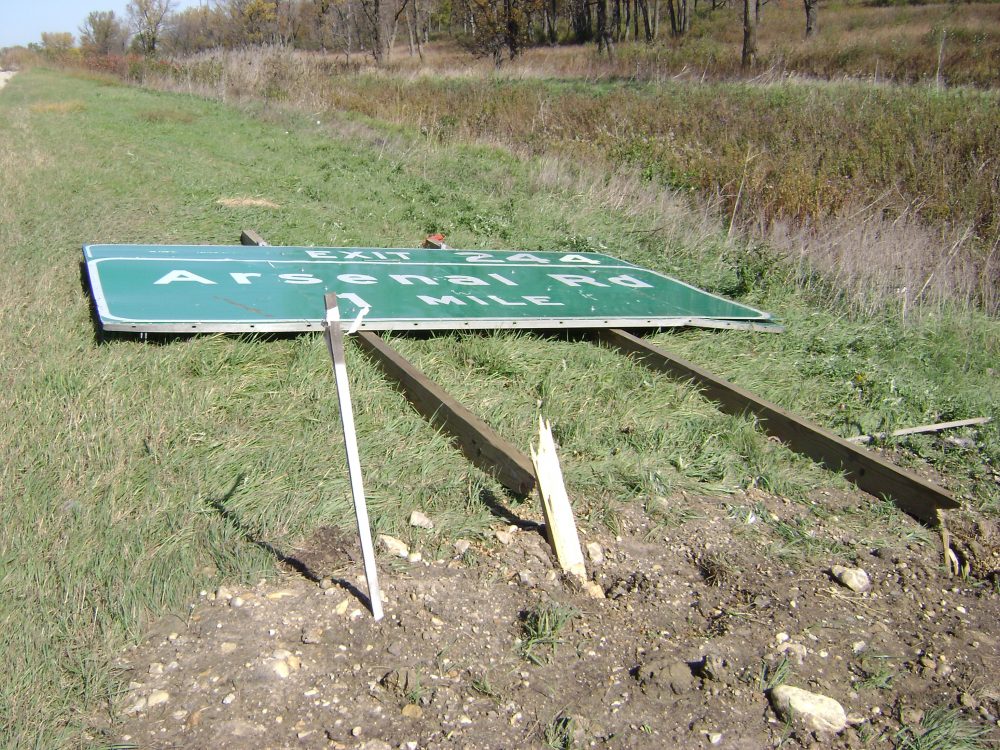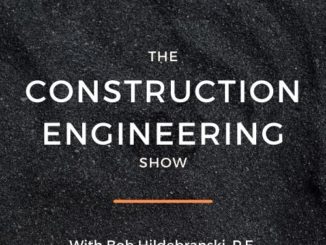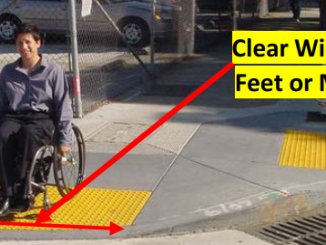
We been having a lot of discussions amongst the rank & file in the field office this week. The topic: Traffic Control.
For the past few weeks, the intersection of York and Irving Park has been a beehive of construction activity. The Contractor has been working on excavating, framing & pouring temporary concrete pavement along side of the existing intersection pavement. Several utility companies are working on relocating their infrastructure to make way for the lowering of the intersection. Lanes are restricted, construction is seemingly everywhere, and 20,000 vehicles per day are trying to navigate the available lanes.
As much as we on the build-side wish we could just completely close the roads that we work on for a few months and do the job unencumbered, the motoring public won’t stand for it. So it becomes a foremost activity: Build a project safely under traffic.
Diligence in maintaining the traffic control equipment and systems is no easy task: Construction is a fluid process. Although a Contractor can plan his day, his lane closure schemes inevitably changes. When construction changes, the traffic control scheme changes. And unless there is a focused effort to make sure the two systems are in harmony, problems can arise.
Our current contract contains provisions that the traffic control system is to be patrolled daily & during the overnight hours. This pay item, Traffic Control Surveillance, is setup to compensate the Contractor for maintaining a work effort that keeps the traffic control equipment, setup, signage, barricades, etc. in the correct operating locations to make sure the motoring public is safe during construction.
During the day, barricades are moved; sometimes by the Contractor, sometimes by motorists, sometimes by Mother Nature. According to the Contract, it is the Contractor’s responsibility to repair, maintain & adjust the equipment on a 4-hour frequency, even during the overnight hours. But let’s face it: That effort is only as good as the care & diligence that the traffic control workers want to give it. When the effort is lack-luster, the jobsite suffers, and more importantly, exposes the motoring public to conditions that may not be traffic-worthy.
So what happens when, say, a lane of asphalt paving has been completed but it’s adjacent lane hasn’t? It’s a real thing: The Contractor didn’t finish his work and plans to come back at a later time to complete the work, and in the meantime, a 1-3/4 inch lip exists along the skip-dash line between lanes. The Contract requires UNEVEN LANES signs be in-place to alert drivers to the condition. A car or truck can pretty-well navigate the condition, driving up or down the lip….
…but how about a motorcycle? How about a motorcycle being driven at 0130 hrs on a less-than-adequately-lit road? What about in a rain storm? There is an obvious RISK associated with the condition.
What happens when that UNEVEN PAVEMENT sign is not in-place?
And there’s the operative word associated with this Lesson: RISK.
–Who owns the RISK? Who is responsible for the RISK?
–Who is liable when the RISK isn’t appropriately addressed?
–Who carries the burden of accepting the RISK?
–Does everyone involved with the job have a duty to see that the RISK is either reduced or eliminated?
–Does everyone have an obligation, either express or implied, to address the RISK?
–When the issue at risk involves a threat to the public at-large, who is ultimately responsible for a problematic issue that occurs due to the RISK not being mitigated prior to the event?
I wrestle with this issue ALL THE TIME…….
I am going to guess that the legal beagles of our time and of generations past have written tomes on the subject of risk. I know there are attorneys who specialize in construction law. I know there are ambulance chasers who make a living taking on cases where negligence is in-play. And I know there are individuals in our society who walk around looking for ways to game the system, to take advantage of situations and issues for their own gain.
Think about it: What better kind of playground is there for these types of individuals than a construction site? And better yet: How does an engineer protect himself from all of this RISK that he cannot control?
I’m still searching for a good answer, one that will allow me to sleep at night.
I’m a PE. That title, the license, bears a DUTY to a lot of different folks. My company. My client. The project & the Contractor working on it. The motoring public being effected by the project. The taxpayers who fund the projects. The list goes on. And I find myself, on a daily basis, navigating a course of action that tries to satisfy each and all of them. Sometimes I’m successful, and sometimes, well, I just don’t know.
How do you balance the juggling act of dishes, bowling pins, chain saws and fire-laden swords all at the same time?
Answer: Be a Man of Character, Follow Your Conscience & Do the Thing That Allows You To Sleep at Night.
I learned this lesson early in my construction career: If I could make a decision on the project that allowed me to lay my head on the pillow unteathered to work issues, then I had a 99% chance that I made the right call. And to this point in my career, I can proudly say, I haven’t lost more than a few night’s sleeps in my, now, 26 years of building things.
Lately, with our current project, I’m sleeping. But I’m spending an inordinate amount of time thinking about things….
Let’s get back to the asphalt lip: What is the right answer to the dilemma of a missing sign? What obligation does the Engineer have in addressing the RISK?
This situation is real because in May, 2008, I was directly exposed to RISK as a construction engineer. I’ll explain that situation, the end results, and what I learned in my next post….



Be the first to comment